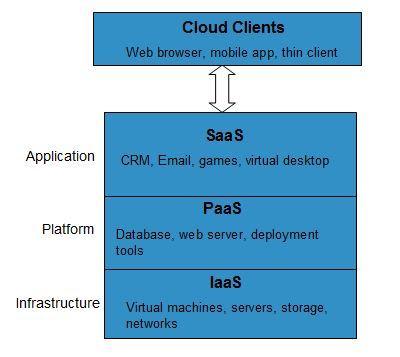Cloud Computing refers to manipulating, configuring, and accessing the applications online. It offers online data storage, infrastructure and application.
Basic Concept:
There are certain services and models working behind the scene making the cloud computing feasible and accessible to end users. Following are the working models for cloud computing:
- Deployment Models
- Service Models
DEPLOYMENT MODELS
Deployment models define the type of access to the cloud, i.e., how the cloud is located? Cloud can have any of the four types of access: Public, Private, Hybrid and Community.

Public Cloud
The Public Cloud allows systems and services to be easily accessible to the general public. Public cloud may be less secure because of its openness, e.g., e-mail.
Private Cloud
The Private Cloud allows systems and services to be accessible within an organization. It offers increased security because of its private nature.
Community Cloud
The Community Cloud allows systems and services to be accessible by group of organizations.
Hybrid Cloud
The Hybrid Cloud is mixture of public and private cloud. However, the critical activities are performed using private cloud while the non-critical activities are performed using public cloud.
SERVICE MODELS
Service Models are the reference models on which the Cloud Computing is based. These can be categorized into three basic service models as listed below:
Infrastructure as a Service (IaaS)
Platform as a Service (PaaS)
Software as a Service (SaaS)
There are many other service models all of which can take the form like XaaS, i.e., Anything as a Service. This can be Network as a Service, Business as a Service, Identity as a Service, Database as a Service or Strategy as a Service.
The Infrastructure as a Service (IaaS) is the most basic level of service. Each of the service models make use of the underlying service model, i.e., each inherits the security and management mechanism from the underlying model, as shown in the following diagram:

INFRASTRUCTURE AS A SERVICE (IAAS)
IaaS provides access to fundamental resources such as physical machines, virtual machines, virtual storage, etc.
PLATFORM AS A SERVICE (PAAS)
PaaS provides the runtime environment for applications, development & deployment tools, etc.
SOFTWARE AS A SERVICE (SAAS)
SaaS model allows to use software applications as a service to end users.
